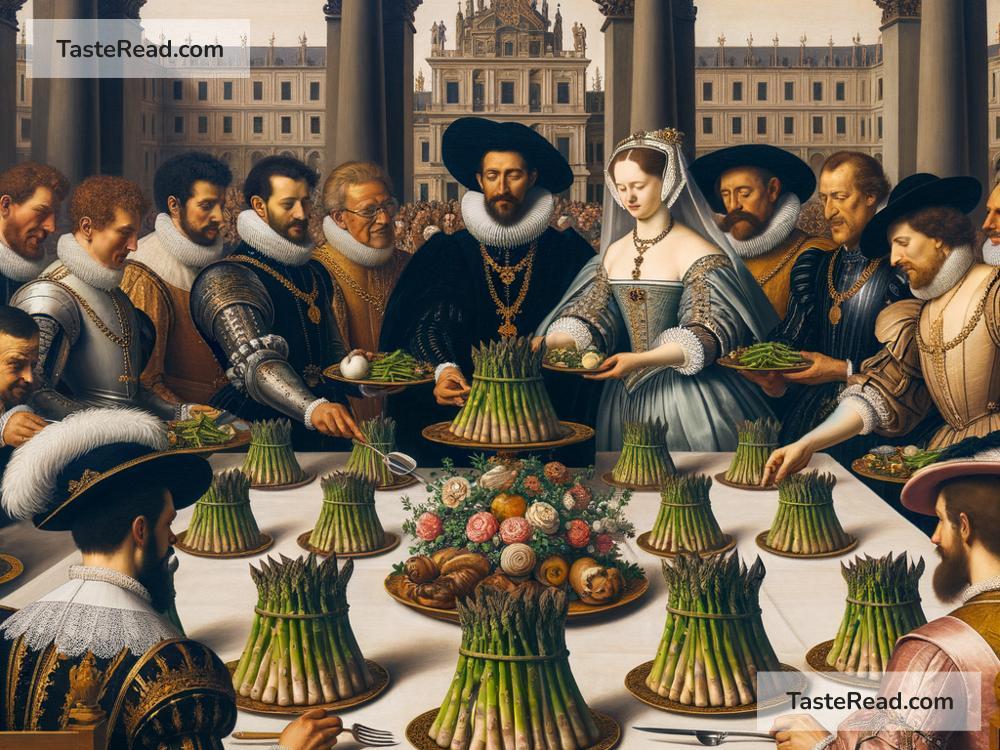The Curious History of Asparagus in European Royalty
When you think of royal banquets, you might picture elaborate feasts with roasted meats, fine wines, and decadent desserts. But one surprising vegetable that played a curious role in the history of European royalty is asparagus. Loved for its unique taste, delicate texture, and even its supposed health benefits, asparagus was once a prized dish reserved for the wealthiest and most powerful people in Europe.
The Early Days of Asparagus
Asparagus has a long history. Its origins can be traced back thousands of years to ancient civilizations, including Egypt and the Roman Empire. The Romans were among the first to cultivate asparagus, appreciating its distinct flavor and its rumored medicinal properties. They even had a saying, “As quick as cooking asparagus,” which referred to how fast it cooks compared to other foods.
Romans introduced asparagus to much of Europe, where it was gradually adopted by local cultures. However, it wasn’t until the Renaissance period (roughly the 14th to 17th centuries) that asparagus began to gain the attention of the elite, including royalty.
Asparagus in Royal Gardens
By the Renaissance, Europe experienced a renewed interest in agriculture and botany, and asparagus was rediscovered as a treasured vegetable. Because asparagus requires special care to grow and takes years before reaching peak production, it became associated with wealth and exclusivity. Only those with the resources to cultivate it—like aristocrats and royals—could enjoy its taste.
Historical records reveal that royal families across Europe began to include asparagus in their diets. King Louis XIV of France, often called the “Sun King,” is said to have been particularly fond of asparagus. In fact, he commissioned his gardeners at the Palace of Versailles to grow it year-round so he could enjoy it whenever he wished.
Growing asparagus at Versailles wasn’t easy. Farmers had to use advanced methods for the time, such as greenhouses and special cultivation techniques, to ensure the vegetable remained available out of season. These efforts reflected not only the king’s love for asparagus but also the status it held as a luxury even within royal circles.
A Symbol of Power and Prestige
During the 17th and 18th centuries, asparagus became a symbol of sophistication and class. Royal banquets often featured dishes showcasing asparagus, sometimes as the centerpiece of elaborate meals. These events demonstrated the wealth and refinement of the hosts and served to impress guests.
The vegetable’s rarity made it even more appealing to European nobles. Unlike basic crops such as wheat or potatoes, asparagus couldn’t be easily grown by everyone. Its cultivation required careful timing, fertile soil, and patience—a perfect combination for a food reserved for the upper crust of society.
Even in royal dining etiquette, asparagus was treated differently than other foods. Some courts introduced special utensils, such as asparagus tongs or forks, to ensure that eating this prized vegetable was done gracefully. These customs reinforced the idea that asparagus wasn’t just food—it was an experience reserved for those in the highest social ranks.
Medicinal Myths and Mystique
The fascination with asparagus wasn’t just about taste or exclusivity. Europeans also believed the vegetable had medicinal and even magical properties. Many thought asparagus could cleanse the body, boost energy, and improve digestion. Because of these beliefs, royals sometimes ate asparagus not just for enjoyment but as a form of health treatment.
Interestingly, asparagus also gained a reputation as an aphrodisiac. This idea, though not scientifically proven, added an air of mystery and allure to the vegetable. Some European rulers reportedly believed it could enhance romantic feelings or vitality. Whether or not these claims were true, they certainly added to the intrigue surrounding asparagus in royal courts.
Asparagus in Modern Times
Asparagus’s history as a royal vegetable gradually faded as agriculture advanced and the vegetable became more widely available. By the 19th and 20th centuries, it was no longer just a food for the elite. Thanks to improved farming techniques, asparagus was introduced to the tables of the middle and working classes across Europe and beyond.
Today, asparagus is enjoyed by people from all walks of life, but its connection to European royalty remains a fascinating chapter in its story. The vegetable once symbolized privilege, wealth, and elegance—qualities that people still associate with fine dining and culinary art.
A Royal Legacy
In modern cuisine, asparagus is still seen as a special ingredient. Whether served in gourmet dishes or simply steamed with a squeeze of lemon, it retains a sense of sophistication. While the days of royal asparagus gardens and elaborate banquets are over, the vegetable’s curious history reminds us of how food can shape culture, status, and traditions.
Next time you sit down to enjoy asparagus, take a moment to think about its royal past. From the fields of ancient Rome to the grand kitchens of Versailles, asparagus has traveled a long and fascinating journey to end up on your plate. Who knows? You might feel just a little bit royal yourself as you take a bite.


